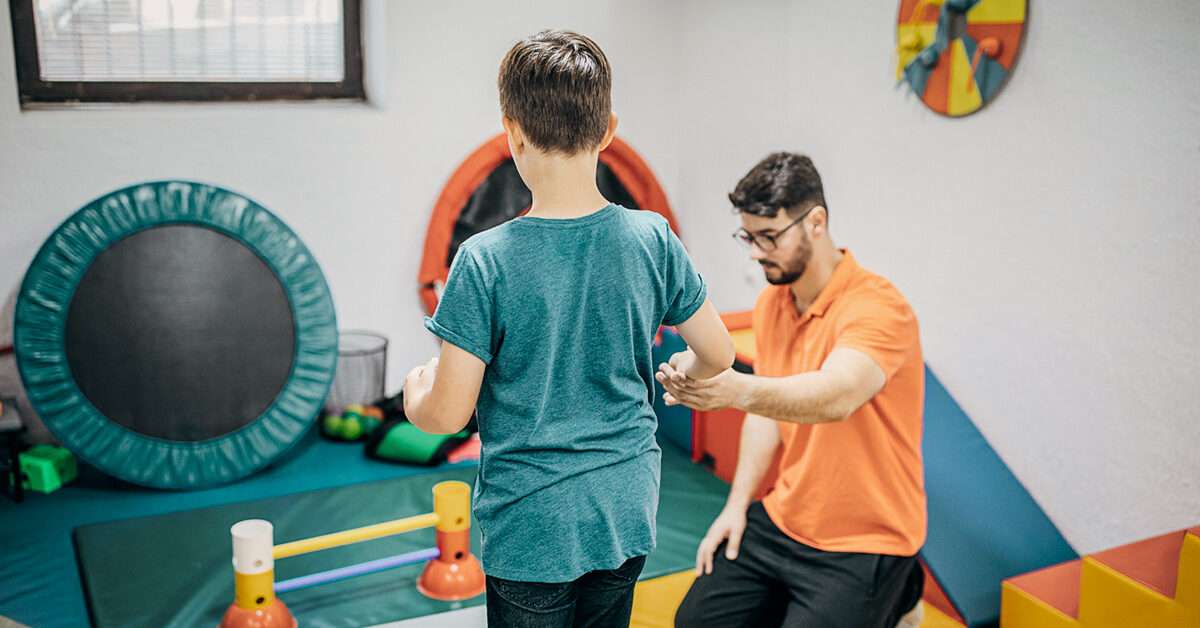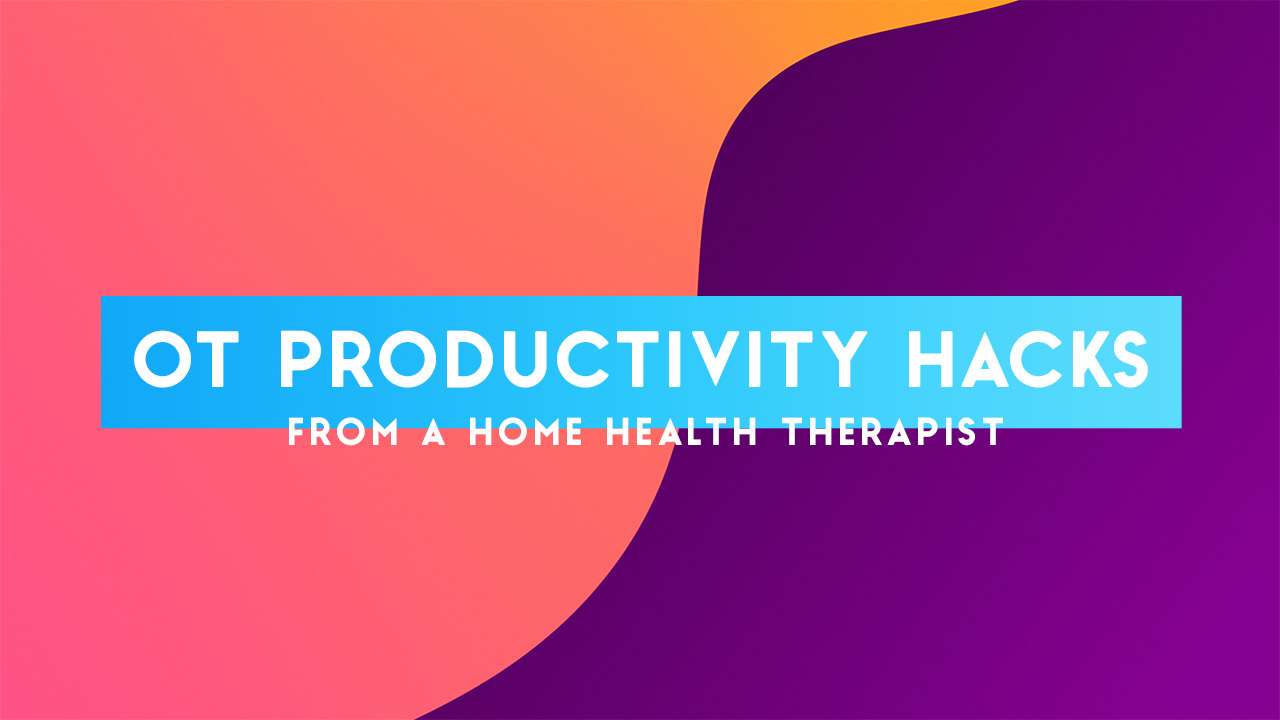An occupational therapist, or “OT,” helps kids with ADHD improve certain skills, such as:
- Organization
- Physical coordination
- Ability to do everyday tasks — such as take a shower, organize their backpack, or make their bed — quickly and well
- Control their “energy” levels, hyperactivity, etc.
Occupational therapists typically have a master’s degree. They are certified in their field and licensed in the state where they practice.
An OT might work in a hospital, clinic, or private practice. Some are based at a school.
How to Find an Occupational Therapist
You can check with the American Occupational Therapy Association to find a qualified OT in your area. Or you can check with local hospitals. Your child’s doctor will often have a list of good OTs near you, too.
When you’re in the process of picking an occupational therapist, ask these questions:
- What kind of training do you have?
- Are you certified and licensed to practice in this state?
- Are you specifically trained in pediatric occupational therapy or just OT?
- How much experience do you have working with kids who have ADHD?
- How will you evaluate my child?
- What treatment goals do you recommend?
- What types of therapy will your program involve?
The OT you choose should focus on your child’s needs and listen to your concerns. Make sure you’re comfortable with the therapist you pick.
The Occupational Therapy Session
The first thing the therapist does is evaluate your child. They usually do this with input from you and your child’s teachers.
During the evaluation, the therapist will look at how ADHD affects your child’s:
- Schoolwork
- Social life
- Home life
The OT will also do a test to find out your child’s strengths and weaknesses. Then they’ll recommend ways to address their issues.
During a therapy session, the occupational therapist and your child might:
- Play games, such as catching or hitting a ball to improve coordination.
- Do activities to work out anger and aggression.
- Learn new ways to do daily tasks like brushing teeth, getting dressed, or feeding themselves.
- Try techniques to improve focus.
- Practice handwriting.
- Go over social skills.
- Work on time management.
- Set up ways to stay organized in the classroom and at home.
- Come up with an analogy that helps your child understand hyperactivity and how to keep it in check. For example, a “hot engine/cold engine” analogy and how to cool a hot engine down.
Occupational therapists help children and teens with attention deficit disorder (ADHD or ADD), sensory processing disorder, or other developmental delays build their skills in everything from handwriting to homework. OTs draw from sociology, neurology, anatomy, and psychology to create a personalized plan that targets each child’s unique physical and mental challenges, aimed at improving daily function and overall quality of life.
Sadly, occupational therapy is out of reach for many children due to location, cost, or school services. For these kids, and for others who benefit from at-home reinforcement, there are several OT-designed exercises that parents can use to build executive functions, encourage independence, and improve academic and social performance. Use these 6 straightforward exercises at home to add the building blocks of occupational therapy to your child’s treatment plan.
1. Use Graphics and Rewards to Avoid Overload and Reward Perseverance
When faced with a multi-step project, a child with ADHD may have a tendency to shut down. Occupational therapists help counter this propensity by teaching him concrete methods for breaking tasks into smaller, manageable pieces, and for maintaining self-motivation through each step. Parents can do the same at home, using graphics and small, tangible rewards that encourage incremental progress.
Graphics and other visual cues are catnip to the ADHD brain; the right graphics depend on the task at hand. A child cleaning his room, for instance, may benefit from a physical map of the space that highlights the areas to be tackled first. A child struggling to get started on homework may find it helpful to see a written schedule, with each assignment slotted into a specific time. “Go in your room and do your homework” is meaningless to many kids with ADHD. But breaking the evening’s tasks down — on paper — can be extraordinarily helpful.
Rewards also vary by task, and by what motivates each particular child. A child with a sweet tooth may get a small piece of candy for finishing each chapter of a book; a child who loves video games may keep reading if he knows he can play 20 minutes of Minecraft once he’s done.
[Self-Test: Could Your Child Have Sensory Processing Disorder?]
2. Create Rubrics to Set Clear Expectations and Guidelines
Children with ADHD benefit from posted rules, clear expectations, and set responsibilities. That’s why occupational therapists make extensive use of rubrics, which allow children to understand exactly what’s expected of them in a given area or on a given task. Giving a child with ADHD ambiguous directions — “I expect you to do your homework neatly” — can engender stress and confusion. What does “neatly” mean? Instead, prepare a written rubric that your child can reference before completing a task to help clear up confusion, practice independence, and develop a clear vision of success.
At home, use rubrics for almost any task or set of tasks, from a homework assignment to the day’s chores. Download rubrics online or make your own, and fill them out with your child or separately. Depending on your child’s age and maturity level, you can score your rubric using numbers, letters, or symbols, and make it as simple or as complicated as is appropriate.
3. Establish Calm Down Zones for Healthier Reactions
Children with ADHD, learning disabilities, or sensory challenges are prone to meltdowns, especially when faced with developmentally inappropriate tasks or expectations. Occupational therapists learn to anticipate these meltdowns and counteract them with “calm down zones,” or specified places where children can go to regroup when they’re frustrated, overwhelmed, or about to blow.
At home, help your child take charge of her feelings and ward off meltdowns before they spin out of control with a similar physical space. A calm down zone could be anywhere — a spare bedroom, or a quiet corner of the kitchen. Stock it with anything helpful and appeasing — a blanket, a box of fidgets, an iPod filled with calming music. First and foremost, this area should help your child take some deep breaths, fully experience her emotions — whether negative or positive — and learn to self-soothe when anger starts to bubble up.
[How to Practice Play Therapy at Home]
4. Devise a Sensory Diet
Any child who has complex sensory requirements — sensory seekers, for instance, or sensory avoiders — can benefit from a “sensory diet,” or a prescribed set of activities that help his or her body get the types of sensory input required before energy can be devoted to learning. This is especially true for academic learning, which usually falls low on the list of a child’s instinctual needs.
Occupational therapists are the best equipped to design a unique sensory diet that suits a specific child’s needs, but you can follow some general rules to design interim sensory interventions for your child. For one, heavy work — actions that push or pull against the body, like wall push-ups — benefits most children with complex sensory needs, no matter which end of the sensory spectrum they fall on. Alternative seating, like exercise balls or standing desks, can also help provide the physical input students need to attend better in class or at home. Other small fixes, like purchasing tagless clothing or avoiding florescent lighting, can make a big difference in maintaining a child’s sensory equilibrium.
5. Decrease Distractions with ADHD-Specific Tricks
Occupational therapists use a range of tools and techniques to help children strengthen their focus muscles and improve their attention spans. Some — like fidget toys — are already well known by parents of children with ADHD. Fidgets come in a wide range of styles, and most are discreet enough to fit in a pocket and be used without drawing undue attention.
Other distraction-busters are less established in the ADHD community, like the OT trick of replacing white paper with colored paper. The ADHD brain can be overstimulated by black and white worksheets, which often appear distorted under bright lighting. Scanning your child’s homework assignment and reprinting it on light blue, light green, or peach-colored paper is a cheap way to help your child better focus better on his work.
6. Use Mindfulness to Ground the ADHD Brain
Have you ever driven home after work and, upon arrival, realized you couldn’t remember the journey? Our bodies are programmed to follow repeated routines, and we don’t always focus on or notice each moment as it’s happening. For children with ADHD, this natural tendency may have negative effects by increasing impulsive behaviors or even raising anxiety levels. Occupational therapists work to help children “ground” themselves in their routines by using mindfulness techniques that help avoid and manage the stress that comes with feeling out of control.
“Grounding” may mean dispersing a calming scent during homework time, for example, to help your child stay focused and present through this (occasionally boring) part of her daily routine. A child who experiences sudden surges of anxiety may ground herself by paying deliberate attention to certain aspects of the world around her. You can help by asking your child to take a deep breath and then identify a red object in the room. Then a yellow one; then a blue. By grounding herself in her environment, your child will practice extending her focus outward — away from her own stresses and fears.
Occupational therapists don’t “fix” children — we empower them. By applying these OT techniques at home, you’ll be empowering your child to better understand his symptoms and take real, concrete steps toward managing them.
[How Art Therapy Tames Impulsivity and Anxiety]
Occupational therapy can address physical, social, educational, and organizational deficits with a plan focused on your individual skills, needs, and activities. Read on to learn more about how they can help to lessen the effects that ADHD has on everyday life.
“Occupational therapists are good team players,” says Cara Koscinski, MOT, OTR/L , a pediatric occupational therapist and the author of six books on occupational therapy for children and young adults. .
If you haven’t yet considered including an occupational therapist (OT) on your treatment team, now may be a good time to investigate how an OT can help you manage symptoms and improve your quality of life.
Because ADHD causes such wide-ranging difficulties, treating it takes a highly-individualized, multi-modal approach.
If you have attention deficit hyperactivity disorder (ADHD) or you’re close to someone who does, you know there’s hardly an area of your life it doesn’t touch: Career, school, family, finances, and physical and mental health… the list goes on.
Occupational therapy focuses on the skills that each person needs to be able to function independently in daily life.
An OT’s first step will be to talk with you to find out how ADHD impairs your (or your child’s) ability to succeed at home, at work, at school, in relationships, or in other areas.
Here are a few areas where evidence-based OT interventions have been instrumental in managing ADHD.
Time management
For someone with ADHD, complex projects, daily routines, time-consuming tasks, and deadlines are difficult — sometimes impossible — to manage. ADHD can make it harder to:
- create and execute a plan for an activity
- finish tasks in the right order
- complete work within the necessary timeframe
- recognize when it’s time to speed up or slow down
- set aside the right amount of time for an activity
OT-tested tip
Keep an analog clock in each room to help you or your child track time visually.
What the science says
Research shows that OT is effective in improving time-processing and daily time management abilities.
In a 2018 study, a group of students ages 9-15 worked with an occupational therapist for 12 weeks to build their awareness of time and task management.
At the end of the intervention, students who worked with an OT showed a significant improvement in their awareness of time, their ability to orient themselves in time, and their ability to manage their time effectively during daily tasks.
Organizational skills
Succeeding in school and on the job usually requires consistent organizational skills. ADHD interferes with the ability to:
- anticipate what you’ll need to complete a project
- keep up with materials and schedules
- separate complex tasks into smaller activities
“Occupational therapists are specialists in activity analysis,” Koscinski says. “This means taking a look at each activity and breaking it down into steps and performance factors or skills the child needs to succeed.”
Once a project has been broken into steps, an OT can help organize materials, develop simple systems, and create visual cues to help people track, remember, and follow through on one step at a time.
“Visuals are very important for kids with ADHD,” Koscinski explains.
OT-tested tip
Keep supplies well stocked. Store them in labeled containers or drawers that are easy for your child to reach, and help your child return all supplies to the labeled space where they belong.
An OT can work with a student to create an outline of the steps involved in a project, color-code different activities, make a model to demonstrate what’s expected, and show a student how to keep a clutter-free workspace.
What the science says
OT helps adults with organizational skills, too. In one 2020 study, a 7-week program of occupational therapy targeting routines and time management resulted in lower stress and fewer symptoms for women with ADHD.
Executive function
Children with ADHD often have difficulty with a complex set of interrelated thinking skills known as executive functions. These childhood difficulties often continue into adulthood, research shows.
Executive functions include:
- working memory
- planning skills
- knowing how to stay attentive or shift attention
- setting priorities
- controlling impulses and distractions
OT-tested tip
Teach your child how to prioritize homework by helping them sort assignments first by the due date and then by how hard your child thinks the assignment will be. During homework sessions, help them tackle the hardest assignments first when their focus and energy levels are highest.
What the science says
A number of studies have shown that occupational therapy can be useful in building executive function.
- In one 2020 study, researchers found that children who participated in a horseback riding intervention supervised by OTs showed improved executive functioning after the program.
- Using a series of hands-on, engaging therapeutic activities called the Cog-Fun (Cognitive Functional) program, children working with parents and OTs experienced significant improvement in executive function after therapy.
- A 2017 study that involved 44 students in China, along with their parents, found that a program targeting executive function skills was effective in improving executive function skills after 12 sessions. In the program, students used visual cues and repetition to practice their skills, while parents learned how to coach and support their children. (Studies show that parent involvement is vital to the success of OT interventions.)
Social skills
ADHD can have negative effects on social interactions. The disorder can cause people to act impulsively, interrupt others, and behave in aggressive ways.
An astute OT can be helpful in getting to the “why” underlying inappropriate social behavior. Koscinski explains that children with ADHD often “act out” because they’re frustrated. An OT working with a classroom teacher can ask:
- Is the student sitting close enough to the teacher to hear and understand instructions?
- Is the classroom environment over-stimulating the student?
- Is the individualized education plan meeting the student’s needs, and is it being followed?
- Is the student allowed to self-advocate in the classroom?
- Does the student need to take a break or move around physically?
“Giving kids breaks to move is so important,” she emphasizes. “Movement increases oxygen in the brain and gets the wiggles out.”
Children with ADHD can take short breaks to return books to the library or run other errands. Better still, the whole class can participate in quick brain breaks to restore energy levels.
OT-tested tip
Keep play dates to a smaller number of children, one or two, so that your child is not overwhelmed. Try to choose children who have good social skills so your child has an example of these skills to model.
What the science says
While there needs to be more research on the specific activities that help, there’s some evidence that OT improves social skills among children with ADHD.
A 2020 systematic research review found that play skills improved and there were fewer inappropriate behaviors when therapy involved both children with ADHD and their peers.
Another 2015 study found that OT interventions led to a long-term improvement in social play skills when therapies were practiced at home and in the clinic.
Assistive devices
Occupational therapists are especially good at training people with ADHD how to use devices that enable them to function more smoothly in daily life.
Koscinski points to several objects that make life easier for kids who need wiggle room and let them expend excess energy during a productive day:
- yoga balls
- scooter boards
- mini-trampolines
- swings
- air cushions
- other personally-matched devices
OT-tested tip
A vibrating watch can be set to vibrate at regular intervals to remind an adult or child to stay on task or return to a task if they’ve been distracted.
What the science says
One 2013 study indicated that adults benefit from training on such assistive devices, too. Low-tech interventions such as weekly schedules and weighted blankets seemed to help most.




